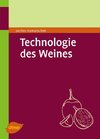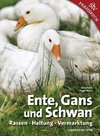
-
 Nemecký jazyk
Nemecký jazyk
The prevalent and incidence Rate of Honey Bee Diseases and Pests. Selected Districts of East Wollega Zone, Oromianational Regional State in Ethiopia
Autor: Amsalu Arega
Studienarbeit aus dem Jahr 2018 im Fachbereich Biologie - Krankheiten, Gesundheit, Ernährung, , Sprache: Deutsch, Abstract: The study was conducted in East Wollega Zone, Oromia Regional State, Ethiopia, from December, 2016 up to August, 2017 to determine... Viac o knihe
Na objednávku, dodanie 2-4 týždne
44.37 €
bežná cena: 49.30 €
O knihe
Studienarbeit aus dem Jahr 2018 im Fachbereich Biologie - Krankheiten, Gesundheit, Ernährung, , Sprache: Deutsch, Abstract: The study was conducted in East Wollega Zone, Oromia Regional State, Ethiopia, from December, 2016 up to August, 2017 to determine the prevalent and incidence rate of honeybee disease and pests. Questionnaire survey and laboratory diagnostic methods were used for the study. The questionnaire was administered to 146 beekeepers (97,1% males)and two honeybee colony samples from each beekeeper totally (292 honeybee colonies) were collected from transitional and frame box hives for laboratory diagnosis.
The honeybee samples collected were examined in laboratory for the prevalent and incidence rate of honeybee disease pathogens and pests. Majority of the respondents started beekeeping after 2010 (28.03%) by catching colonies as honey bee colony source (54.8%). The major dearth period of the area was late march to early may. The trend of beekeeping in the study area was shifting from traditional to modern beekeeping and the trend of honeybee colony and its yield was decreasing due to honeybee health problem of the area (pests, predators, pathogenic disease, high cost of bee equipment and agro-chemical application).
In the study area the major pests and predators considered as challenges were ants, beetles, wax moth, varroa destructor and some predators like honey badgers, bee eater birds, dead head hawks moth, lizards, wasps and birds respectively. Varroa, Nosema, Amoeba and chalk brood disease were confirmed while tracheal mite, stone brood, Ameriacan and Europian foul brood did not confirmed during the study period. The prevalentand incidence of varroa destructor was higher in dry season than wet season while the prevalent/incidence rate of nosema and chalk brood disease was limited during dry season. Amoeba disease was distributed in both seasons.For the reason of time restraint in this study area, farther study on economic threshold of honeybee disease and pests is suggested by monitoring throughout the year.
- Vydavateľstvo: GRIN Verlag
- Rok vydania: 2021
- Formát: Paperback
- Rozmer: 210 x 148 mm
- Jazyk: Nemecký jazyk
- ISBN: 9783346363732











